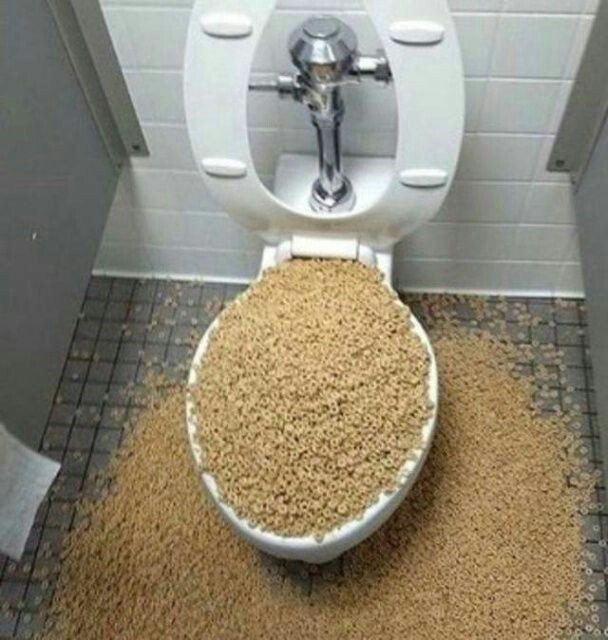Can One to Flush Food Down the Toilet?
Can One to Flush Food Down the Toilet?
Blog Article
What are your opinions on Think Twice Before Flushing Food Down Your Toilet?

Intro
Lots of people are usually faced with the dilemma of what to do with food waste, particularly when it pertains to leftovers or scraps. One common question that occurs is whether it's fine to flush food down the bathroom. In this post, we'll delve into the reasons why people may think about purging food, the effects of doing so, and different techniques for correct disposal.
Reasons why people could consider purging food
Absence of awareness
Some people might not be aware of the possible damage caused by purging food down the toilet. They may wrongly think that it's a safe method.
Comfort
Flushing food down the commode might seem like a quick and simple service to throwing away unwanted scraps, especially when there's no nearby trash can available.
Idleness
In many cases, individuals may just select to flush food out of large laziness, without thinking about the effects of their actions.
Consequences of flushing food down the commode
Ecological influence
Food waste that ends up in rivers can contribute to contamination and injury water ecological communities. Additionally, the water utilized to purge food can stress water resources.
Pipes problems
Purging food can bring about clogged up pipes and drains, triggering expensive plumbing repairs and troubles.
Types of food that need to not be flushed
Coarse foods
Foods with fibrous structures such as celery or corn husks can obtain tangled in pipelines and create clogs.
Starchy foods
Starchy foods like pasta and rice can take in water and swell, bring about obstructions in pipelines.
Oils and fats
Greasy foods like bacon or cooking oils need to never be flushed down the commode as they can strengthen and create blockages.
Correct disposal techniques for food waste
Utilizing a garbage disposal
For homes equipped with waste disposal unit, food scraps can be ground up and flushed through the plumbing system. Nonetheless, not all foods appropriate for disposal in this way.
Recycling
Certain food packaging materials can be reused, lowering waste and minimizing ecological impact.
Composting
Composting is a green way to dispose of food waste. Organic materials can be composted and utilized to improve soil for gardening.
The significance of correct waste monitoring
Reducing environmental harm
Appropriate waste management practices, such as composting and recycling, help reduce contamination and protect natural resources for future generations.
Securing pipes systems
By preventing the method of flushing food down the toilet, homeowners can prevent expensive pipes repair services and keep the honesty of their plumbing systems.
Conclusion
In conclusion, while it might be tempting to flush food down the bathroom for benefit, it is necessary to comprehend the potential consequences of this action. By adopting proper waste monitoring practices and dealing with food waste responsibly, individuals can add to much healthier plumbing systems and a cleaner environment for all.
FLUSH FOOD DOWN THE TOILET?
FLUSHING FOOD CAN CAUSE BLOCKED DRAINS IN YOUR HOME
All of the plumbing fixtures in your home are connected to the same sewer pipe outside of your home. This outdoor sewer pipe is responsible for transporting all the wastewater from your home to the Council sewer mains. Even small pieces of food that go down the kitchen sink can cause problems for your sewer. It should therefore be obvious that flushing larger bits of food, such as meat, risks a clog in either the toilet itself or the sewer pipes. Flushing greasy food is even more problematic because oil coagulates when it cools, coating the interior lining of your pipes.
THE TOILET IS NOT A BIN
Food isn’t the only thing that people shouldn’t be flushing down the toilet. People use the toilet to dispose of all kinds of things such as tampons, makeup wipes, dental floss, kitty litter and even underwear. Water goes to great lengths to educate residents about the high costs and stress placed on wastewater treatment systems simply from people flushing the wrong stuff down the toilet. It costs taxpayers millions of dollars each year, and homeowners thousands in blocked drain repairs.
FLUSHING FOOD IS A WASTE OF WATER
Flushing food is a waste of our most precious resource - water. In June this year Level 1 water restrictions were introduced to protect water supply from drought conditions. Much of New South Wales continues to be affected by prolonged drought with recent figures revealing up to 97 per cent of the state remains in drought. Depending on whether you have a single or dual flush toilet, every single flush uses between five and 11 litres of water. In the current climate this is a huge amount of water to be wasting on flushing food that should be placed in the bin (or better yet, the compost).
https://www.jabplumbingsolutions.com.au/blog/can-you-flush-food-down-the-toilet

I hope you liked our part on . Thank you so much for taking the time to read our post. Appreciated our posting? Please quickly share it. Help others discover it. We value reading our article about Think Twice Before Flushing Food Down Your Toilet.
Free Estimate Report this page